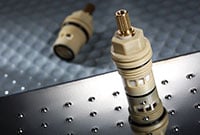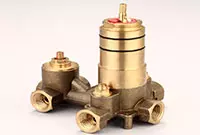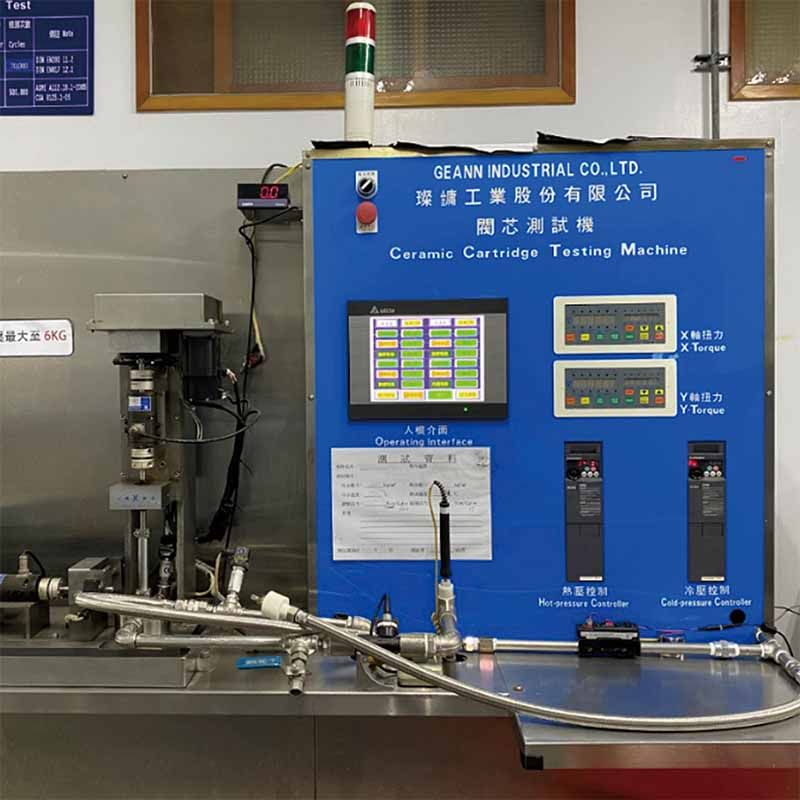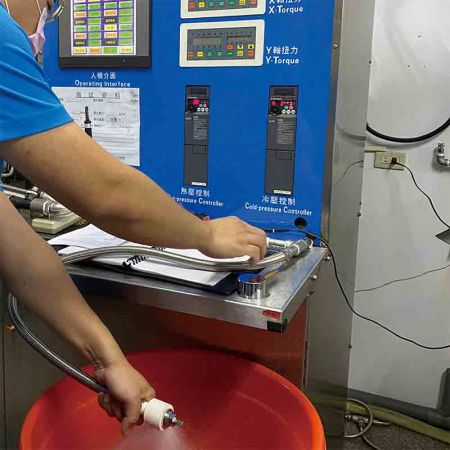How To Test Flow Rate
Flow Rate is the information to provide the valve and faucet manufacturers in referencing to determine the water supply rate under each dynamic water pressure. There are several international standards to guide the flow rate test. For North America market, chapter 5.4 of ASME A112.18.1 / CSA B125.1 is the guideline to determine the flow rate. And there is EN817 and EN200 as the flow rate standard to meet the Europe requirements. For the Faucet or Valve in Australia, AS/NZS 3718 would be the test method to achieve the WELS requirements.
TESTING FLOW RATE IN ULTRASONIC FLOW METER
Geann Industrial Co., Ltd. tests the flow rate of the cartridge and components with ultrasonic flow meter. It provides electronic reading information for analysis. The accuracy of Ultrasonic Flow meter is much more current than mechanical flow meter. Geann will able to determine the flow rate in each dynamic water pressure and curve the flow diagram for our customer as referencing.
CALIBRATING FLOW METER IN WEIGHT PERIODICALLY
Periodically calibration will increase the reliability in the measurement. For Ultrasonic Flow meter, Geann uses Weight Scale to compare the measurement and correct the reading from Flow meter periodically to make sure the test result is reliable.
PROCEDURES OF TESTING FLOW RATE
Testing technician will install the test specimen onto test bench and collect to Ultrasonic Flow meter for testing circumstance setting. First, technician will adjust the dynamic water pressure to 6 kg-cm2 for the water to fill in the pipeline in full status. And then, adjust the dynamic water pressure from 6 kg-cm2 to 1 kg-cm2 progressively and record the flow rate at each level of the dynamic water pressure. Meanwhile, technician will pay attention on the flow rate changing ratio during dynamic water pressure adjustment. It will be helpful for the following analysis.
Normally, testing technician will test the flow rate in the condition which we called – “Without Resistance”. It means there will be resistance from manifold to the water outlet and the resistance will limited the actual flow rate of the cartridge and diverter. Testing technician will design the test bench in direct flow to simulate the flow rate without resistance. It helps our engineering team to have better understanding on where is the bottleneck of the flow rate.
Press Release
 All Cartridges Complied to California AB100 Law
All Cartridges Complied to California AB100 LawGeann Cartridges and Valves are all complied to California AB100 Law. Our products are certified by both NSF International and IAPMO.
Read More 1/2 Half inch Faucet Plastic Cartridge
1/2 Half inch Faucet Plastic Cartridge1/2 Half inch Two Handle Faucet Plastic Ceramic Cartridge for Faucet, Basin Application.
Read More Pressure Balance Valve With Diverter
Pressure Balance Valve With DiverterPressure Balance Valve With Diverter for Anti-Scald and Shower Application.
Read More



